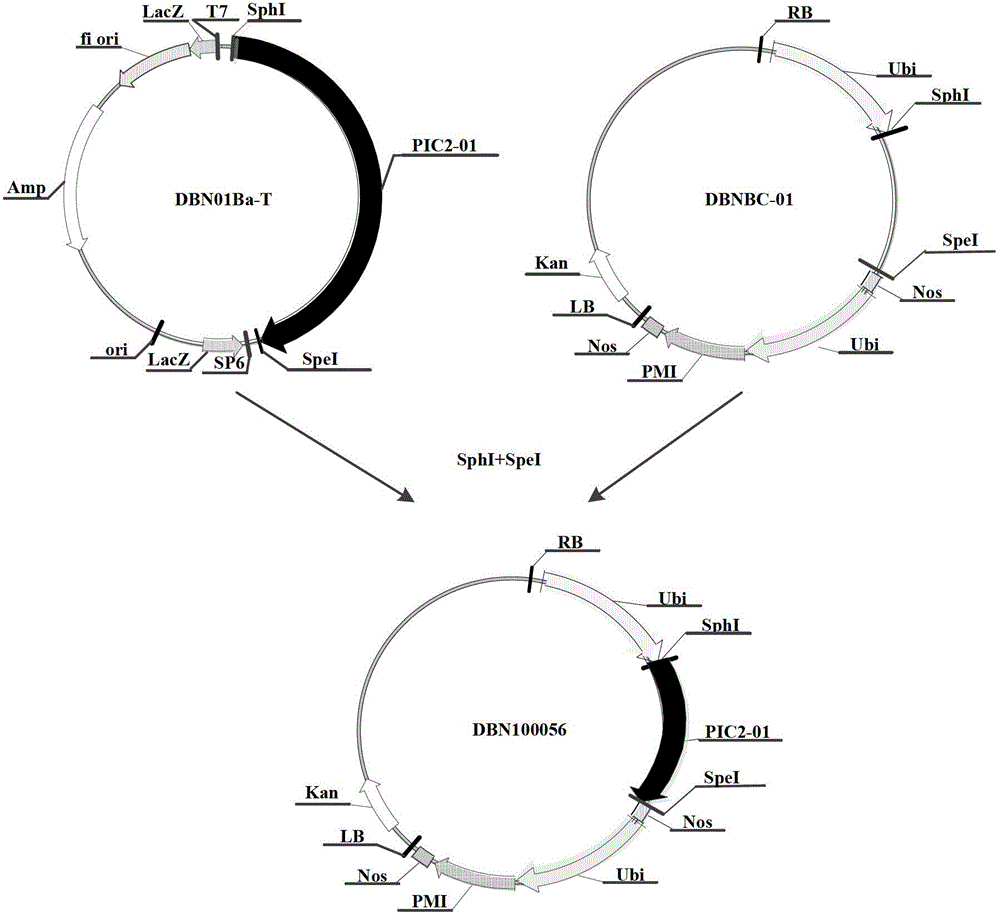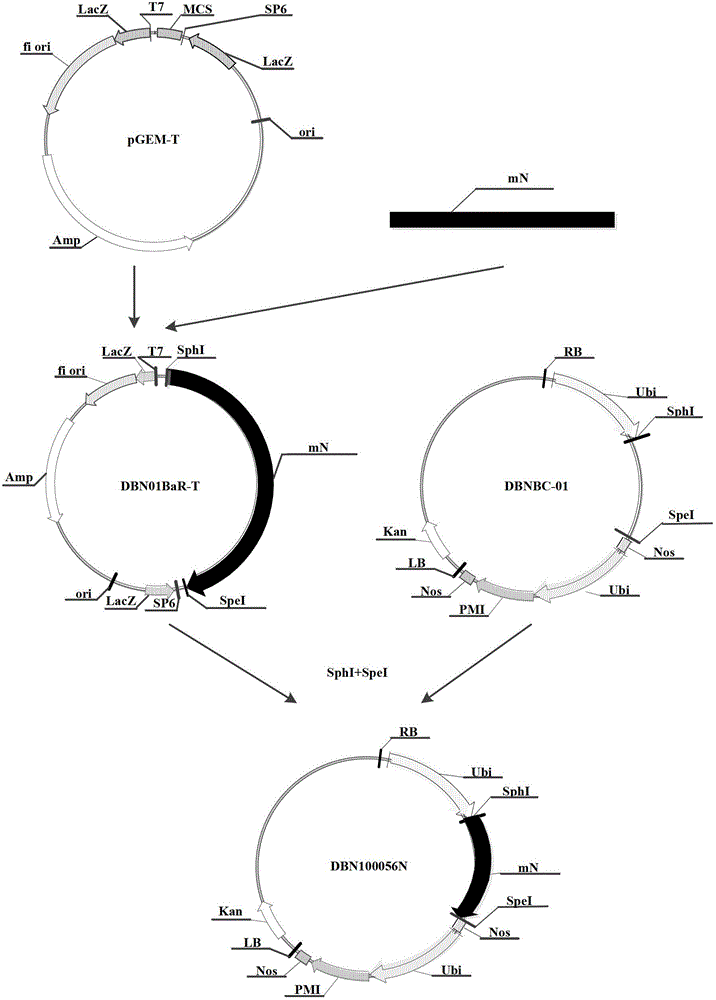Insecticidal gene and use thereof
A technology of insecticidal genes and transgenics, applied in the direction of genetic engineering, plant genetic improvement, application, etc., can solve problems such as environmental pollution, increased production costs, and the need for repeated application
- Summary
- Abstract
- Description
- Claims
- Application Information
AI Technical Summary
Problems solved by technology
Method used
Image
Examples
no. 1 example
[0067] The first embodiment, selection, optimization and synthesis of PIC2 gene
[0068] 1. Select the PIC2-01 gene sequence for optimization
[0069] The amino acid sequence of the natural Cry1Ba3 gene whose serial number was AAK63251.1 registered by Zhang Jie et al. in 2003 is the basis for the optimization of the insecticidal gene PIC2-01 of the present invention. The nucleotide sequence of the natural Cry1Ba3 gene is as shown in SEQ ID NO in the sequence table 2, the amino acid sequence of the natural Cry1Ba3 gene is shown in SEQ ID NO: 3 in the sequence listing.
[0070] 2. Optimizing the amino acid sequence of the above-mentioned PIC2-01
[0071] Keep the above PIC2-01 amino acid sequence (1228 amino acids) unchanged, and optimize the nucleotide sequence (3687 nucleotides) encoding the above PIC2-01 amino acid sequence (1228 amino acids) according to the corn preference codon remodel.
[0072] The strategies of codon optimization and transformation mainly include: acc...
no. 2 example
[0076] The second embodiment, construction of recombinant expression vector and transformation of recombinant expression vector into Agrobacterium
[0077] 1. Construct the recombinant cloning vector DBN01Ba-T containing the PIC2-01 nucleotide sequence and connect the synthetic PIC2-01 nucleotide sequence into the cloning vector pGEM-T (Promega, Madison, USA, CAT: A3600), the operation steps According to the instructions of the pGEM-T vector of Promega company, the recombinant cloning vector DBN01Ba-T was obtained, and its construction process was as follows: figure 1 Shown (wherein, Amp represents the ampicillin resistance gene; f1 represents the replication origin of phage f1; LacZ is the LacZ start codon; SP6 is the promoter of SP6 RNA polymerase; T7 is the promoter of T7 RNA polymerase; PIC2-01 is the promoter of PIC2 -01 nucleotide sequence (SEQ ID NO: 1); MCS is a multiple cloning site).
[0078] Then, the recombinant cloning vector DBN01Ba-T was transformed into Escher...
no. 3 example
[0088] The third embodiment, the acquisition and verification of corn plants transferred to PIC2-01 nucleotide sequence
[0089] 1. Obtaining maize plants transferred to the PIC2-01 gene sequence
[0090] According to the routinely adopted Agrobacterium infection method, the immature embryos of the aseptically cultured corn variety Zong 31 (Z31) were co-cultured with the Agrobacterium described in 4 in the second embodiment, so that 2 and 3 in the second embodiment The T-DNA in the constructed recombinant expression vectors DBN100056 and DBN100056N (native sequence) (including the promoter sequence of maize Ubiquitin gene, PIC2-01 nucleotide sequence, native sequence, PMI gene and Nos terminator sequence) were transferred to maize In the genome, maize plants transformed with PIC2-01 nucleotide sequence and maize plants transformed with natural sequence (positive control) were obtained; meanwhile, wild-type maize plants were used as negative control.
[0091] For Agrobacterium...
PUM
 Login to View More
Login to View More Abstract
Description
Claims
Application Information
 Login to View More
Login to View More - R&D
- Intellectual Property
- Life Sciences
- Materials
- Tech Scout
- Unparalleled Data Quality
- Higher Quality Content
- 60% Fewer Hallucinations
Browse by: Latest US Patents, China's latest patents, Technical Efficacy Thesaurus, Application Domain, Technology Topic, Popular Technical Reports.
© 2025 PatSnap. All rights reserved.Legal|Privacy policy|Modern Slavery Act Transparency Statement|Sitemap|About US| Contact US: help@patsnap.com



